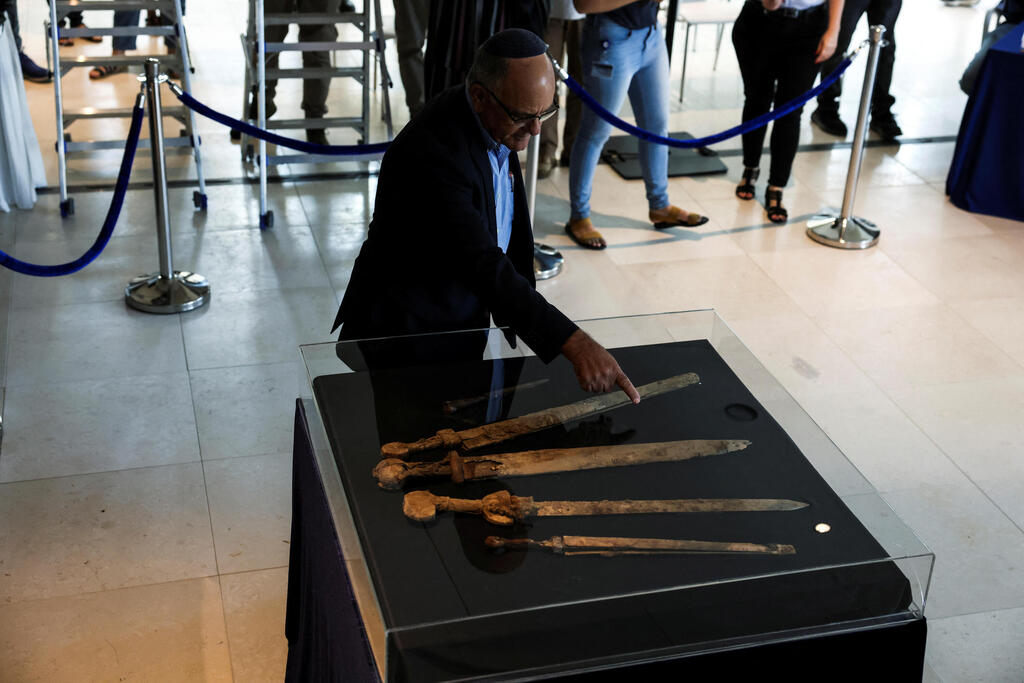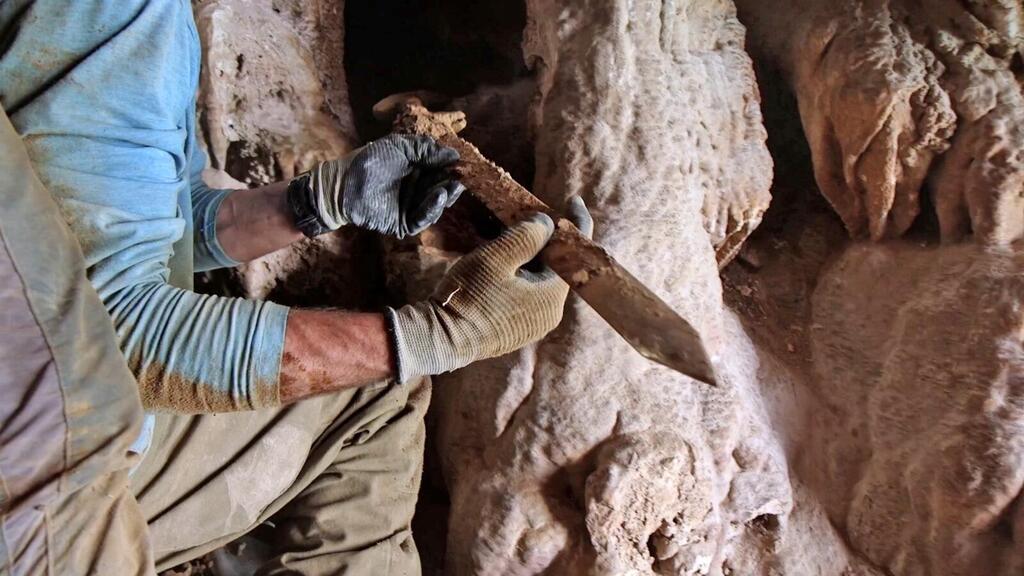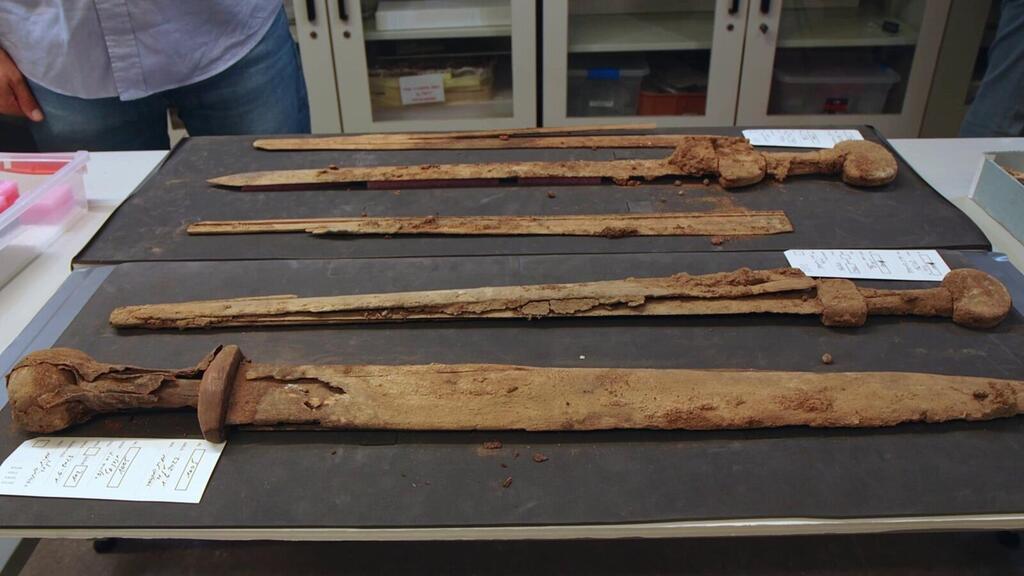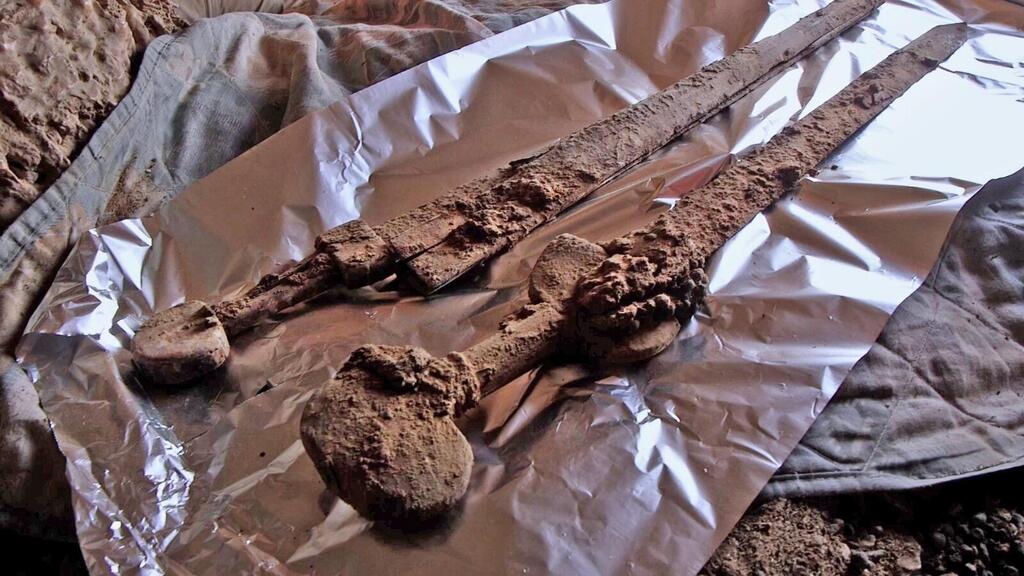Cache of rare Roman weapons found in Judean Desert
(Video: Israel Antiquities Authority, Emil Eljamy)
Israeli researchers recently made a rare find from the distant past in the Judean Desert, four 1,900-year-old swords and a spearhead from the Bar Kokhba Revolt against the Roman Empire.
Read more:
Jewish rebels left four swords and the head of a spear in a cave in the Ein Gedi Nature Reserve. For many years, the swords remained in the cave until they were recently uncovered by researchers from Ariel University, the Hebrew University and the Israel Antiquities Authority (IAA).
5 View gallery
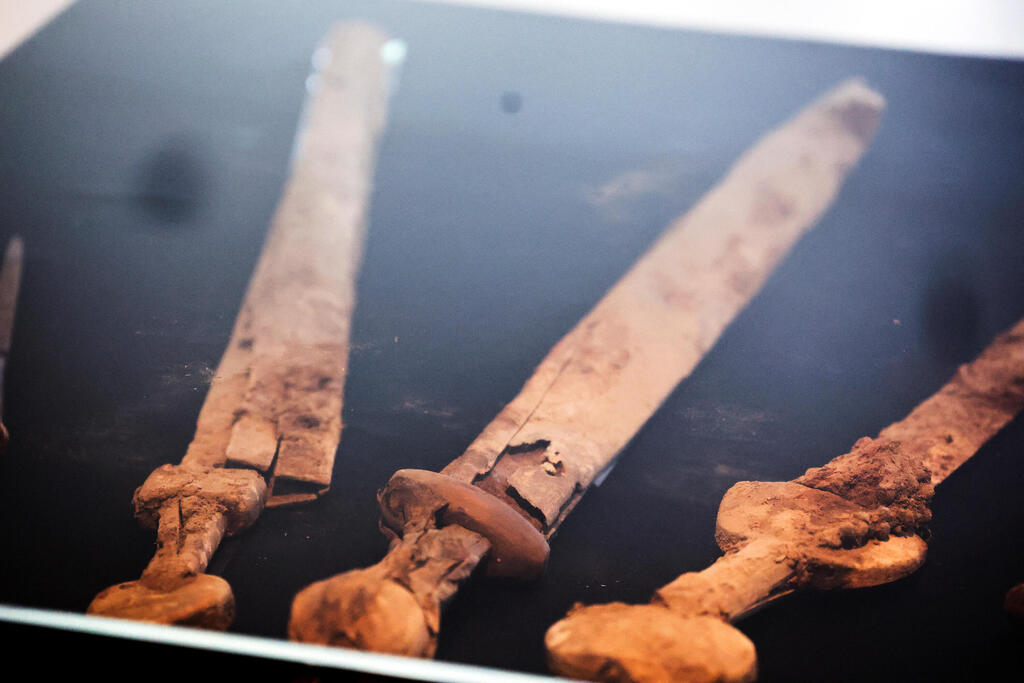

Roman-era swords discovered in Judean Desert displayed in Jerusalem
(Photo: REUTERS/Ronen Zvulun)
The weapons are believed to have been war spoils taken from the Roman army. "Finding one such sword is rare, so four? It's a dream. We had to rub our eyes to believe it," the excited researchers said Wednesday at the unveiling of the weapons at a press conference in Jerusalem.
The IAA said that the weapons were discovered in a secluded, difficult-to-access cave north of Ein Gedi, situated within the Ein Gedi Nature Reserve managed by the Israel Nature and Parks Authority.
About 50 years ago, fragments of Hebrew writing were also discovered in this cave. The text was written in ink on a shard, in the ancient Hebrew script typical of the First Temple period.
Recently, the cave was visited by Dr. Asaf Gayer from the Department of Land of Israel Studies and Archaeology at Ariel University, geologist Boaz Langford from the Institute of Earth Sciences and the Cave Research Center at the Hebrew University of Jerusalem and IAA photographer Shai Halevi. The trio set out to capture the Hebrew inscription on the shard using multispectral imaging, a technique that enables the deciphering of portions of the text that are not visible to the naked eye.
While exploring the upper level of the cave, Dr. Gayer discovered an exceptionally well-preserved spearhead tip within a narrow, deep recess. In a nearby area, he also found pieces of processed wood that were later identified as parts of a sheath.
The IAA is currently conducting a comprehensive survey of caves in the Judean Desert, documenting hundreds of caves in the area over the past six years, and 24 archaeological excavations have been carried out in selected caves. The aim of these efforts is to preserve the unique archaeological remains found in the Judean Desert, and to protect them from looting.
The survey team, along with Dr. Gayer and Langford, returned to the cave for a second time to conduct a meticulous survey of its every crevice, finding an additional chamber on the cave's upper and hidden level. Within a narrow, deep crevice between two stalactites, the researchers were astonished to discover an extraordinary cache of four Roman swords.
The IAA said that the swords were remarkably well-preserved; three of them still had their iron blades encased in wooden scabbards. They also found there fragments of leather straps and other metal and wooden objects, which were part of the sword assembly. The swords featured intricately designed handles made of wood or metal.
The blade length of three of the swords is approximately 60-65 cm, a feature that identifies them as Roman Spathas. Another shorter sword, with a blade length of about 45 cm, was identified as a Ring Pommel Sword.
The swords were carefully extracted from the fissure and quickly transferred for treatment and preservation under climate-controlled conditions in the IAA laboratories. Initial examination of the collection suggests that these are standard-issue swords used by soldiers stationed in the Land of Israel during the Roman period.
Following the discovery, the IAA carried out a full archaeological excavation, unearthing findings from both the Chalcolithic period (about 6,000 years ago) and the Roman period (about 2,000 years ago). A bronze coin from the time of the Bar Kokhba Revolt was found near the entrance of the cave, possibly hinting at the time period when the cave was used as a hideout.





